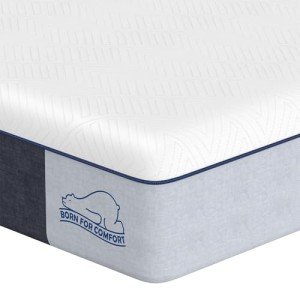The Ultimate Guide to Soft Memory Foam Mattresses
Memory foam mattresses have transformed the method individuals experience sleep, providing comfort and assistance that boost the quality of rest. Among the different kinds of memory foam mattresses, soft memory foam mattresses stand out for their capability to cradle the body's contours, making them particularly interesting a wide variety of sleepers. This article dives much deeper into soft memory foam mattresses, exploring their advantages, typical features, maintenance tips, and answering regularly asked concerns.
What is a Soft Memory Foam Mattress?
A soft memory foam mattress is developed with a thicker layer of softer memory foam, which permits a plush, sink-in feel that complies with the body. This structure offers pressure relief and is specifically useful for side sleepers who need a softer surface to cushion their shoulders and hips.
Comparison Table: Soft vs. Firm Memory Foam Mattresses
| Feature | Soft Memory Foam Mattress | Firm Memory Foam Mattress |
|---|---|---|
| Comfort Level | Soft and plush | Supportive and steady |
| Pressure Relief | Excellent for side sleepers | Better for back and stomach sleepers |
| Adaptability | High flexibility to body shape | Moderate versatility |
| Motion Isolation | Great at decreasing motion transfer | Excellent, but less than soft |
| Temperature Regulation | May retain heat | Frequently cooler due to firmness |
Benefits of Soft Memory Foam Mattresses
Soft memory foam mattresses offer various benefits that accommodate various sleeping preferences. Here are some main advantages:
- Pressure Relief: Soft memory foam significantly minimizes pressure points on the body, providing convenience for people who have conditions like arthritis or other joint discomforts.
- Spine Alignment: The material conforms to the natural curve of the spine, maintaining appropriate alignment and lowering the threat of pain in the back.
- Minimized Motion Transfer: For couples, this kind of mattress reduces disturbances from a partner's motions, which is perfect for light sleepers.
- Thermal Adaptation: Many modern soft memory foam mattresses include cooling technologies, helping to dissipate heat and preserve a comfortable sleeping temperature level.
- Resilience: Quality memory foam is created to withstand typical wear and tear, making them a long-term investment for better sleep.
Who Should Choose a Soft Memory Foam Mattress?
Soft memory foam mattresses are especially ideal for:
- Side Sleepers: This group will gain from the nestling result that soft foam provides, alleviating pressure on the shoulders and hips.
- Light-weight Individuals: Those who weigh less may discover that a softer mattress offers adequate support without feeling overly firm.
- People with Specific Health Issues: People experiencing persistent pain conditions or pressure ulcers might also discover soft memory foam mattresses helpful.
Important Features to Consider
When picking a soft memory foam mattress, it's vital to think about a number of functions. Here are some key aspects:
- Foam Density: Higher density usually suggests much better durability and assistance. Look for 4 pounds. per cubic foot or greater.
- Layer Construction: A great soft mattress generally has numerous layers. Look for a base layer for assistance, followed by convenience layers of differing densities.
- Cooling Technology: Many manufacturers now integrate cooling gels or breathable covers that help control temperature level.
- Trial Period and Warranty: A good mattress will offer a trial period and a warranty, allowing customers to evaluate out the mattress for an extended time.
Upkeep Tips for Soft Memory Foam Mattresses
Maintaining a soft memory foam mattress can help extend its life-span and maintain its efficiency. Think about the following suggestions:
- Use a Mattress Protector: This will help secure versus spots and spills, preserving the mattress's condition.
- Rotate Regularly: Rotate the mattress every 3 to 6 months to guarantee even wear.
- Clean Gently: Use mild cleaning agent and water to clean spills and discolorations. Avoid extreme chemicals that might harm the foam.
- Air It Out: Allow the mattress to breathe by sometimes eliminating the bedding and allowing fresh air to distribute.
Frequently Asked Questions About Soft Memory Foam Mattresses
1. How long does a soft memory foam mattress last?
A high-quality soft memory foam mattress can last between 7 and 10 years, depending upon factors like usage, weight, and upkeep.
2. Luxury Memory Foam Mattress be utilized on adjustable bases?
Yes, the majority of soft memory foam mattresses are flexible and can be utilized on adjustable bases, enabling better personalization of sleeping positions.
3. Are soft memory foam mattresses bad for back pain?
Not always. While softer mattresses may not be perfect for everyone, they can offer exceptional back alignment and pressure relief for side sleepers. Appropriate choice is key.
4. What should I do if my soft memory foam mattress feels too soft?
If a soft memory foam mattress feels too soft, think about adding a mattress topper that uses a firmer surface, or ensure that the mattress is well-suited to your sleeping position and weight.
5. Do soft memory foam mattresses sleep hot?
While conventional memory foam can trap heat, numerous soft memory foam mattresses now feature cooling innovations to alleviate this problem effectively.
Soft memory foam mattresses provide a special blend of convenience, support, and durability that accommodates a range of sleepers. Their ability to comply with the body guarantees excellent pressure relief, which can boost sleep quality, specifically for side sleepers and those with specific health concerns. By considering the various features, benefits, and upkeep tips laid out in this post, customers can make an informed choice to buy a soft memory foam mattress that fulfills their specific requirements for relaxing and renewing sleep. As constantly, it is vital to test the mattress personally and take complete benefit of trial alternatives whenever possible to ensure an acceptable purchase.

